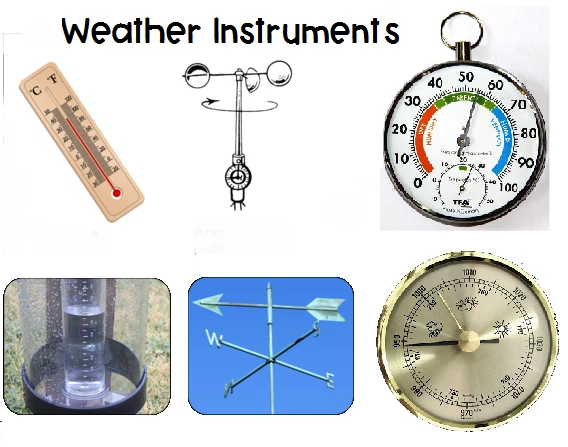
# Weather Instruments: Essential Tools for Accurate Forecasting
## The Importance of Weather Instruments
Weather instruments play a crucial role in meteorology by providing accurate data about atmospheric conditions. These tools help scientists, forecasters, and even amateur weather enthusiasts understand and predict weather patterns with greater precision. From simple thermometers to sophisticated radar systems, weather instruments form the backbone of modern meteorology.
## Common Types of Weather Instruments
### 1. Thermometers
Thermometers measure air temperature, one of the most fundamental weather parameters. Modern digital thermometers provide instant readings, while traditional mercury or alcohol thermometers remain reliable options.
### 2. Barometers
Barometers measure atmospheric pressure, which is essential for predicting weather changes. A sudden drop in pressure often indicates approaching storms, while rising pressure typically suggests fair weather.
### 3. Anemometers
These instruments measure wind speed and direction. Cup anemometers are common for measuring speed, while wind vanes determine direction. Some advanced models combine both functions.
### 4. Hygrometers
Hygrometers measure humidity levels in the air. Understanding humidity is crucial for predicting precipitation, fog formation, and even human comfort levels.
### 5. Rain Gauges
Simple yet effective, rain gauges measure precipitation amounts. They come in various designs, from basic cylindrical containers to more sophisticated tipping bucket models.
## Advanced Weather Measurement Tools
Beyond basic instruments, meteorologists use more complex equipment for comprehensive weather analysis:
### Weather Satellites
Orbiting satellites provide global coverage of weather patterns, cloud formations, and storm development. They’re invaluable for tracking large-scale weather systems.
### Weather Radars
Doppler radar systems detect precipitation, measure its intensity, and track storm movement. They’re particularly useful for severe weather warnings.
### Weather Balloons
Equipped with radiosondes, these balloons collect atmospheric data at various altitudes, including temperature, humidity, and pressure measurements.
## Choosing the Right Weather Instruments
When selecting weather instruments, consider:
Accuracy requirements for your specific needs
Durability and weather resistance
Ease of use and maintenance
Data recording capabilities
Budget constraints
For personal use, home weather stations that combine multiple instruments offer convenience and reasonable accuracy. Professional meteorologists typically require more precise, specialized equipment.
## The Future of Weather Instruments
Technological advancements continue to improve weather instrumentation. Smart sensors, IoT connectivity, and AI-powered analysis are transforming how we collect and interpret weather data. These innovations promise even more accurate forecasts and earlier warnings for severe weather events.
Understanding and using weather instruments properly leads to better weather predictions, which can save lives, protect property, and help plan daily activities more effectively. Whether you’re a professional meteorologist or simply curious about the weather outside your window, these tools provide valuable insights into our ever-changing atmosphere.
Keyword: wether instruments